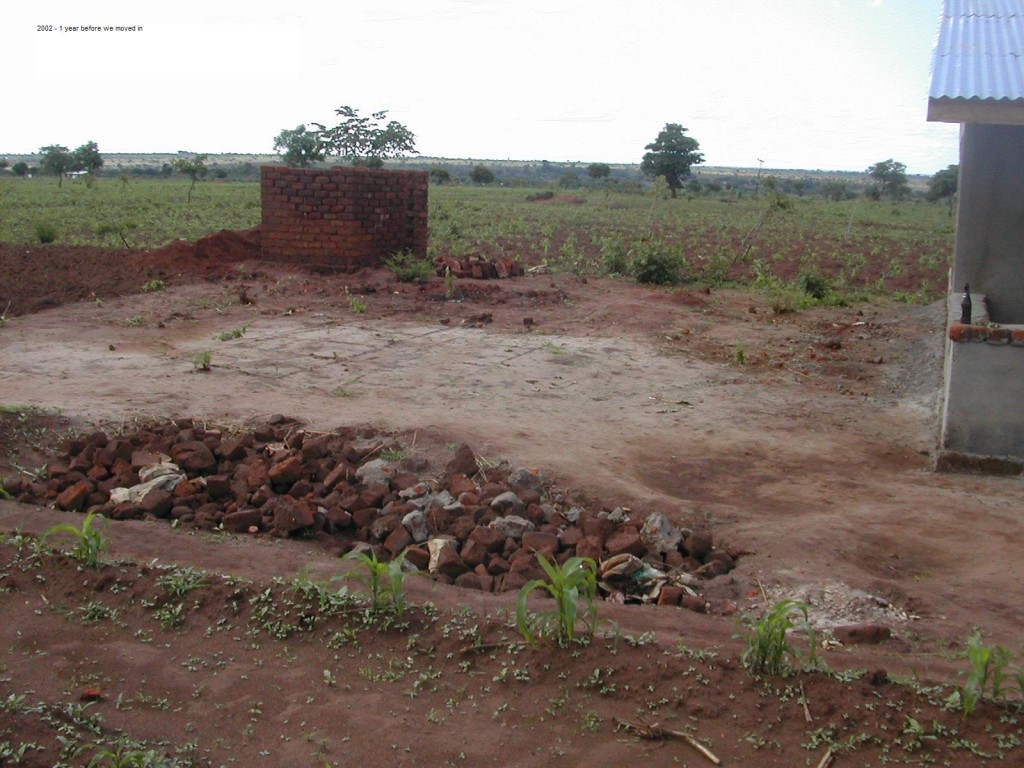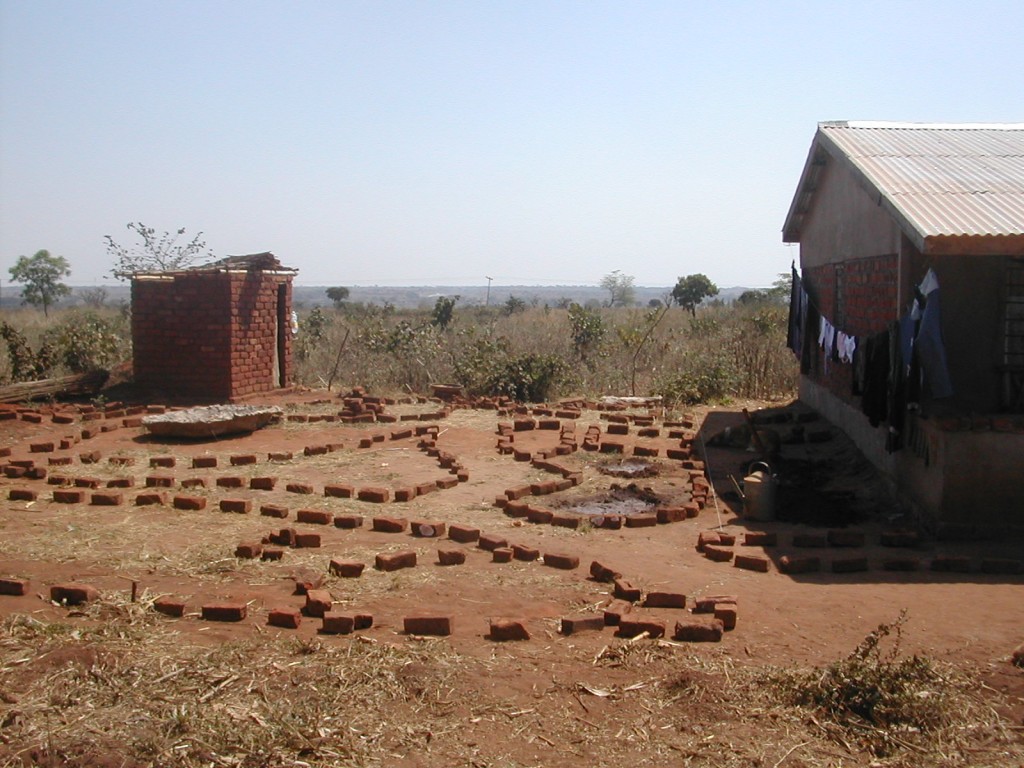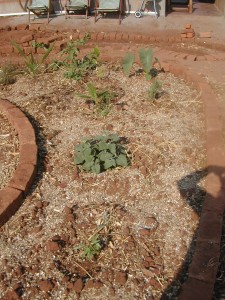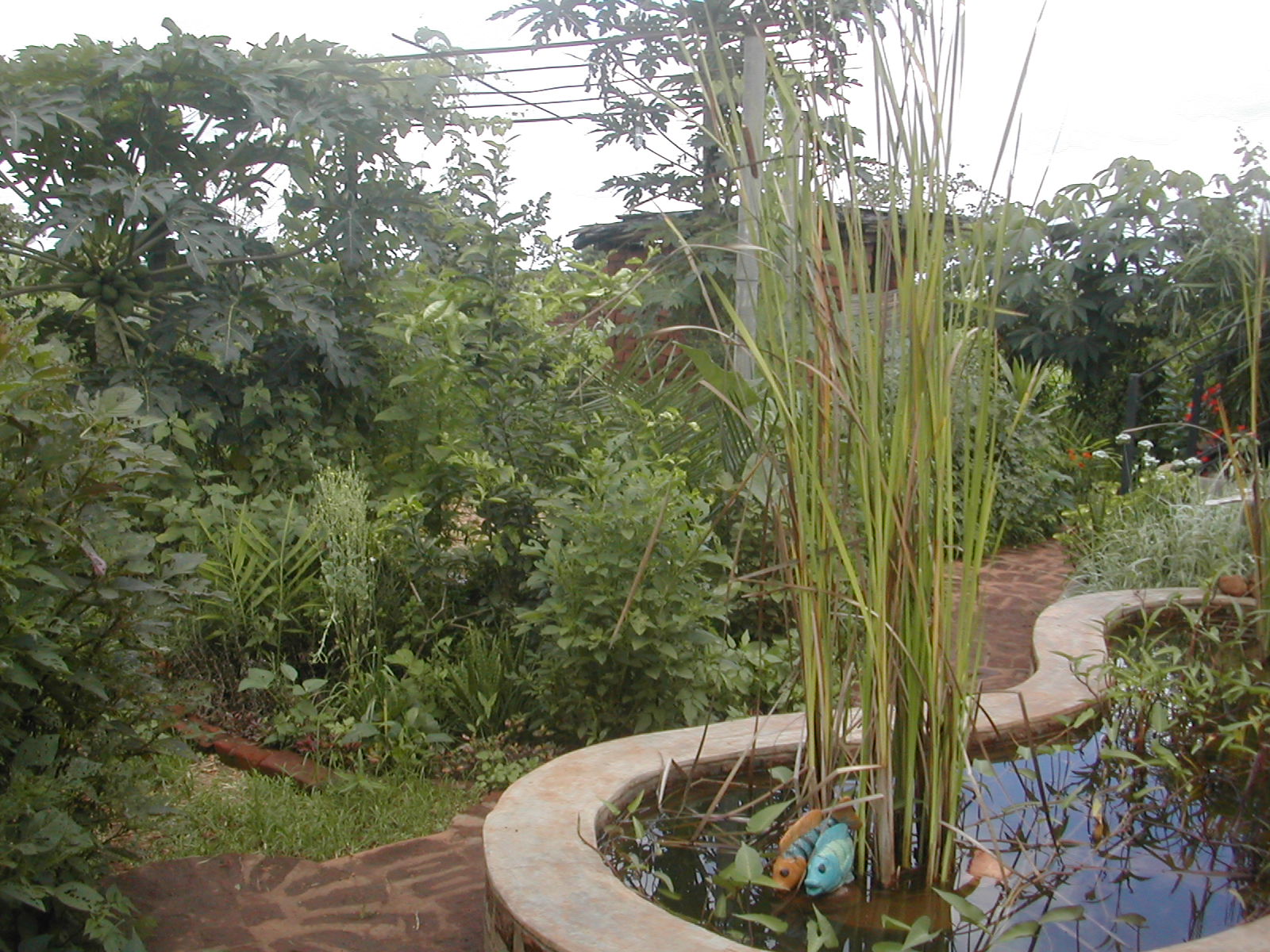“Design” is a fundamental Permaculture principle. With good design and a bit of forward thinking you can eliminate a lot of thoughtless labor in the future. Permaculture design is not a simple matter, in fact entire courses and books are available on the subject. For successful Permaculture design one has to consider many different factors such as: available resources, soil, water, nutrition, contour, slope, sun, shade, living conditions, desired results, energy expenditure, leisure time, etc.
The following are a few examples of Permaculture Design in Malawi. This first picture is of the area around our house just before we moved there in 2003. It is a very typical example of the environmental degradation that is occurring throughout the country. Over-sweeping, burning, erosion, and over-exposure to the sun create infertile, barren, compacted areas around most residential dwellings.
In the next picture, you will see where we have begun the design process. Using old broken bricks we began to create a visual “map” of where various elements of the Permaculture plot may be situated. If bricks aren’t available you can use whatever you have: string, sticks, rocks, leaves, branches, etc. This allows you to assess and change your designs many times without much waste of energy. Before you dig or plant anything, make sure you are putting things in the proper place. Remember that Permaculture is PERMANENT agriculture. Once you’ve established an area is is supposed to be a place that is allowed to grow, mature, and yield in that same area indefinitely.
Another component of Permaculture Design is trying to use things to their fullest potential. When we teach about this, we often use the example of a mango tree. The main reason that people plant a mango tree is to receive the fruits. Before we do this, however, we need to consider what else a mango tree can provide. Things such as: wind break, shade, organic matter, habitat, medicine, soil conservation, etc. Before we plant the mango tree we need to determine where all of these additional benefits will be put to the best use. Do we want it close to the house for shade, or in a hedgerow to slow the wind, or on a slope to hold the soil? Once you’ve determined all of these things, then we plant the tree for its delicious fruits.
You can begin to see in the picture below that we have outlined garden beds, pathways, water features, and even areas for future relaxation.
In this next picture, we have begun to prepare some of the beds for planting. Normally, we don’t don’t do much digging. With the use of root crops, mulch, compost, and with the help of digging insects and animals the soil will eventually soften up without any back-breaking effort. For our initial beds, however, we really wanted to get some things established quickly before the rains came. We did a miniature version of double-digging where you turn the soil while mixing in organic matter. For these beds we dug down about a foot and a half just to break through the compacted layer and we mixed in what little organic matter we could find such as peanut shells, leaves, market matter, and neighbor’s sweeping piles.
With the soil prepared, we began building our “guilds”. (For more information on what a guild is, please click here)
With proper design, guild-building techniques, and Permaculture principles, this next picture illustrates the amazing potential to transform an unproductive area into a thriving, fertile, and high-yielding eco-system. This picture is the exact same area as the other pictures but ONE YEAR later! Now you can see a flourishing garden with lots of foods and integrated systems such as a small fish pond (to help with integrated pest management by attracting things like birds, lizards, frogs, bees and other animals & insects), a gazebo area, a trellis for climbing plants, and pathways for creating more edge systems where plant life tends to thrive. In six months we had more food around our house than any of our neighbors, many who have been in that area for ten years or more.





